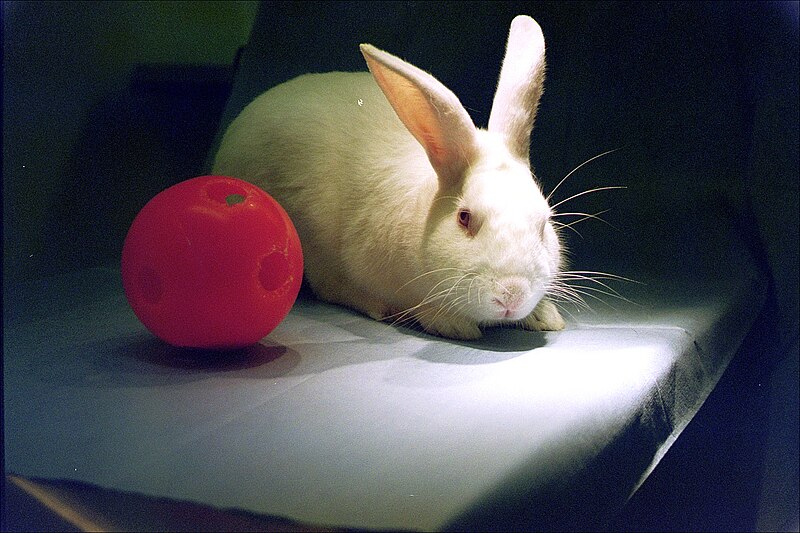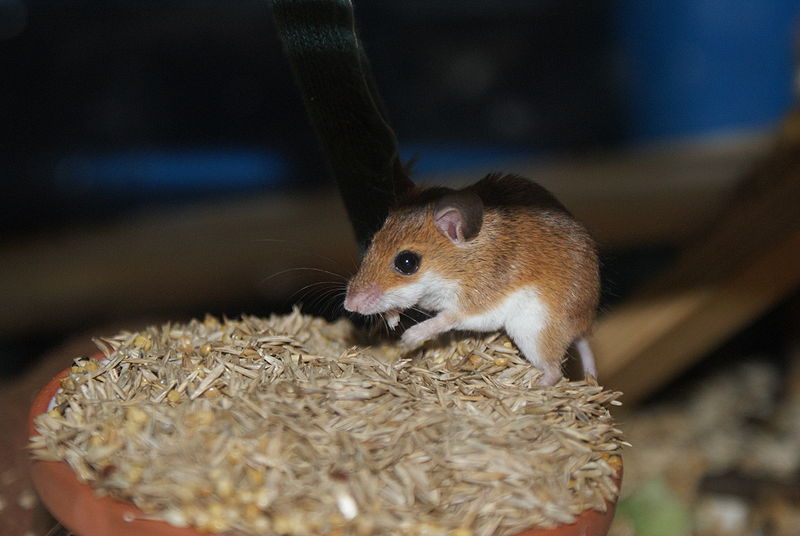 For many people the term “pit bull” typically brings several negative images immediately to mind. Images of a muscular dog on the end of a thick chain guarding a junkyard; a news report of a child being killed by a pack of ferocious dogs; the underbelly of the inner city where dog fighting rings play their disgusting games. “Pit Bulls” have earned a stigma as brutes, fighters, and even killers. I have to admit that if I were to come across the stereotypical “pit bull” in a dark alley, I would certainly be looking for the quickest way out of there. But, in my entire career in animal care, I have never come across a true pit bull, at least not the dog that fits that notorious label. Read More »
For many people the term “pit bull” typically brings several negative images immediately to mind. Images of a muscular dog on the end of a thick chain guarding a junkyard; a news report of a child being killed by a pack of ferocious dogs; the underbelly of the inner city where dog fighting rings play their disgusting games. “Pit Bulls” have earned a stigma as brutes, fighters, and even killers. I have to admit that if I were to come across the stereotypical “pit bull” in a dark alley, I would certainly be looking for the quickest way out of there. But, in my entire career in animal care, I have never come across a true pit bull, at least not the dog that fits that notorious label. Read More »
Category Archives: Pet Behavior
Feed SubscriptionNotes on Canine Learning
Recently I came across an interesting article about teaching dogs sign language. I was intrigued by the concept, and I decided to give it a shot with my own dogs. I purchased a book written by the creator of K9Sign. I have a lot of hard work ahead of me, if I want to successfully teach my dogs to sign, but one of the first things that I’ve got to work on is my understanding of how dogs learn. Read More »
Stress-free Homes Improve Health and Behavior of Cats and Rabbits
 Two recent studies have highlighted the role that stress and boredom plays in pet behavior and health. Although carried out on research colonies of cats and rabbits, both contain important lessons for pet owners. Steps as simple as establishing a routine substantially reduced the pain associated with serious illnesses.
Two recent studies have highlighted the role that stress and boredom plays in pet behavior and health. Although carried out on research colonies of cats and rabbits, both contain important lessons for pet owners. Steps as simple as establishing a routine substantially reduced the pain associated with serious illnesses.
Novelty vs. Routine
Experience has taught me that stress plays a major role in the health of all captive creatures, be they insects or elephants. While novelty and new experiences may be positives, established routines also have their uses. Read More »
Till Death (Or Pets) Do Us Part – How Having Cats Changed My Marriage
I’ve been married to the same wonderful man for almost 17 years. Around our house, we refer to him as The Tall Guy. “We” being the cats and me. That’s how they sign their cards to him. Our cats were strays and they’re still independent in nature. Although I’d love to think they think of us as Mommy and Daddy, I’m pretty sure they see us solely as the two-legged creatures who appear to dole out the food.
We were married for six years before we had cats. Looking back, all I can think is, “What on earth did we do with all our time?” (I know what we’re doing with it now: Fighting a losing battle against cat hair.)
But there have been other changes since welcoming cats into our home, many I’m sure most pet lovers can relate to. Read More »
The Mongolian Gerbil’s Unusual Breeding and Social Behavior
 The Mongolian Gerbil, Meriones unguiculatus, is a common pet, but its life in the wild is anything but “common”. In fact, its social structure and breeding habits are among the rodent world’s most unique. Let’s take a look at what field research has revealed about this most interesting little creature. Read More »
The Mongolian Gerbil, Meriones unguiculatus, is a common pet, but its life in the wild is anything but “common”. In fact, its social structure and breeding habits are among the rodent world’s most unique. Let’s take a look at what field research has revealed about this most interesting little creature. Read More »
World’s Smartest Dog?…Border Collie can Identify 1,022 Objects
 Researchers at South Carolina’s Wofford College have announced that a Border Collie has been trained to identify over 1,000 objects. Surprisingly, the clever dog, “Chaser”, can also differentiate between objects and actions involving them – grasping, in essence, the concept of nouns and verbs!
Researchers at South Carolina’s Wofford College have announced that a Border Collie has been trained to identify over 1,000 objects. Surprisingly, the clever dog, “Chaser”, can also differentiate between objects and actions involving them – grasping, in essence, the concept of nouns and verbs!
Surpassing Her “Trainers”
Summarized in a recent Behavioral Processes article, the Border Collie experiments are expected to shed light on just what it is that dogs understand when we speak to them. The researchers (or ethologists, as animal behavior specialists are known) pointed out that they stopped introducing new objects at 1,022 due to time constraints – Chaser seemed willing and able to learn more. In fact, her ability to remember all the objects seemed to exceed that of her human trainers! Read More »
Ferret Owners Beware – a Fatal Disease Common in Unmated Females
Female Domestic Ferrets that are not allowed to breed often contract a life-threatening disease known as Estrus-Associated Aplastic Anemia. Spaying your Ferret before she enters her first estrus cycle (the period during which she can become pregnant, also known as “heat”) is the best defense against this and other reproductive disorders.
A Unique Breeding Strategy
Ferrets and other members of the family Mustelidae (weasels, mink, otters and related species) have evolved a unique reproductive strategy known as induced ovulation. Unlike most mammals, female Ferrets do not ovulate (release eggs so that they may be fertilized) until the act of mating has occurred. Read More »
Working Dogs – Guard Dogs Benefit Livestock and Wildlife in Europe and Africa
 At first glance, providing farmers with Karakachans, Kangals and other large, aggressive dogs might not seem an ideal conservation strategy. However, biologists based in Bulgaria and Namibia are doing just that – and both farmers and wildlife are reaping the benefits.
At first glance, providing farmers with Karakachans, Kangals and other large, aggressive dogs might not seem an ideal conservation strategy. However, biologists based in Bulgaria and Namibia are doing just that – and both farmers and wildlife are reaping the benefits.
Why Use Dogs at All?
Farmers who use dogs to protect their flocks do not need to rely upon poison, which has for decades been the predator-control method of choice. Poison-laced-bait kills “target species” such as leopards, bears and other large predators as well as rodents, vultures and smaller animals. When the poisoned creature itself dies, scavengers that feed upon its corpse may in turn become victims. Read More »
Keeping and Breeding the African Pygmy Mouse – Part 1
 The African Pygmy Mouse (Mus minutoides) is a delightful little creature that is sometimes available in the US pet trade. Its care differs slightly from that of its giant (by mouse standards!) cousin the House Mouse, but experience with House or Fancy Mice will be very useful should you decide to give these diminutive fellows a try.
The African Pygmy Mouse (Mus minutoides) is a delightful little creature that is sometimes available in the US pet trade. Its care differs slightly from that of its giant (by mouse standards!) cousin the House Mouse, but experience with House or Fancy Mice will be very useful should you decide to give these diminutive fellows a try.
Note: Be sure to check local laws before purchasing an exotic rodent, and ask your doctor if there are any health issues to consider. All animal bites and scratches, however minor, should be attended to by a physician. Read More »
Training Your Pet – The “Sit Sit Sit” Phenomenon
Often, as I am observing owners and their dogs I notice that the owners ask for a particular behavior several times before the dog offers it. For example, you ask Fido to sit. He doesn’t immediately sit, so you say it again, “sit”, only to again repeat yourself until Fido actually sits. In such cases, what he has learned is that the command is not just “sit”, but he thinks it is “sit sit sit, Fido, sit”. We’re often frustrated by his apparent lack of obedience, wondering why the dog is choosing not to listen to us. In reality, he’s just plain confused. Without a clear-taught command, he doesn’t know what you are asking him to do! Read More »
 That Pet Blog That Pet Place Pet Blog
That Pet Blog That Pet Place Pet Blog
